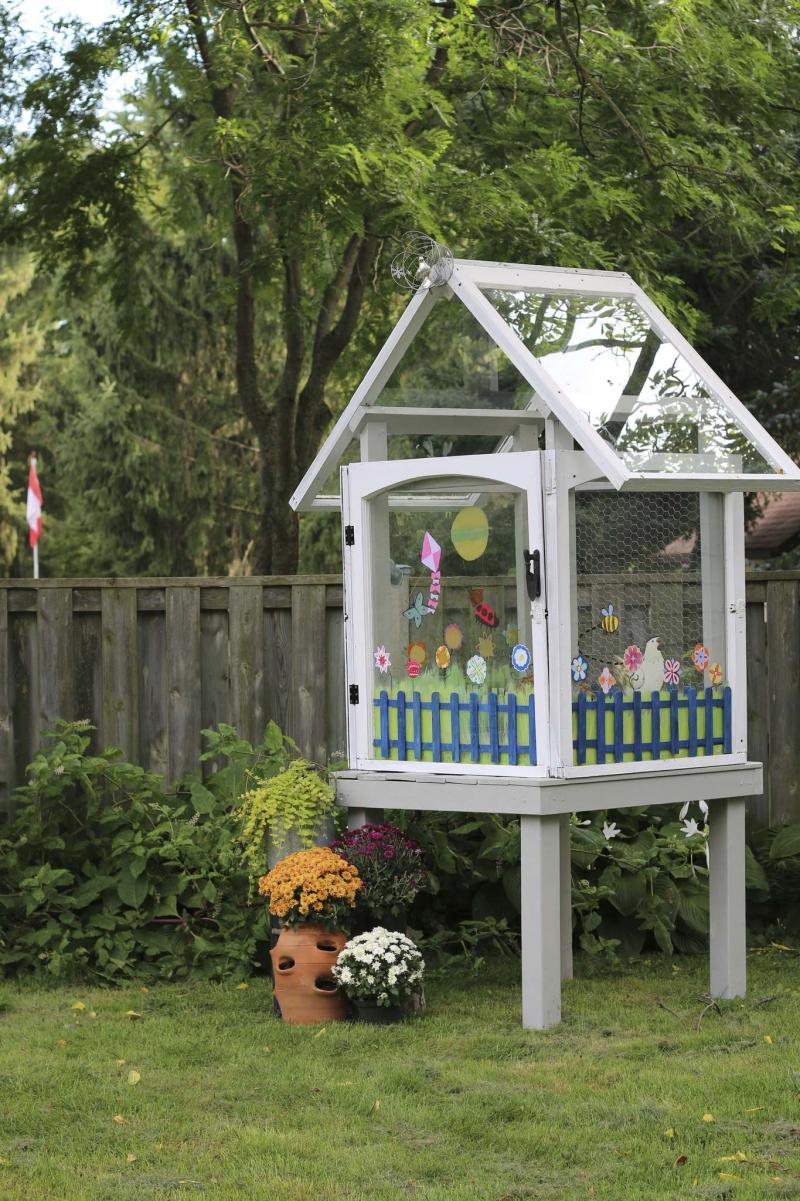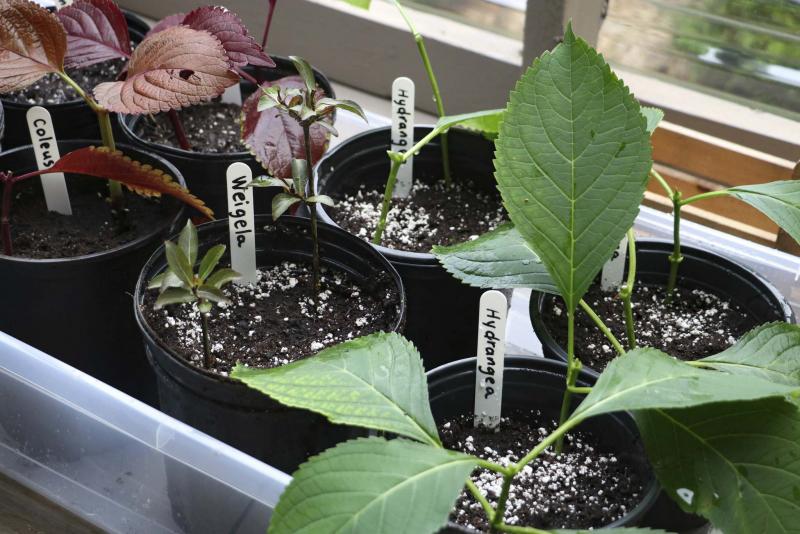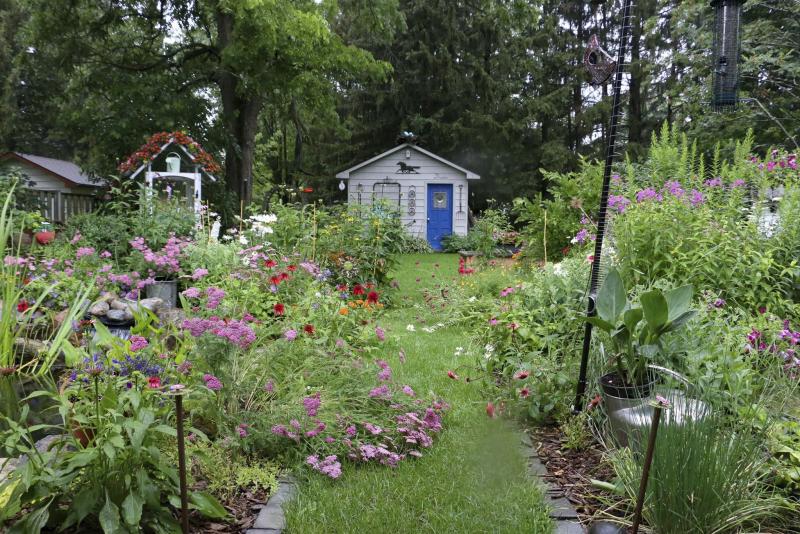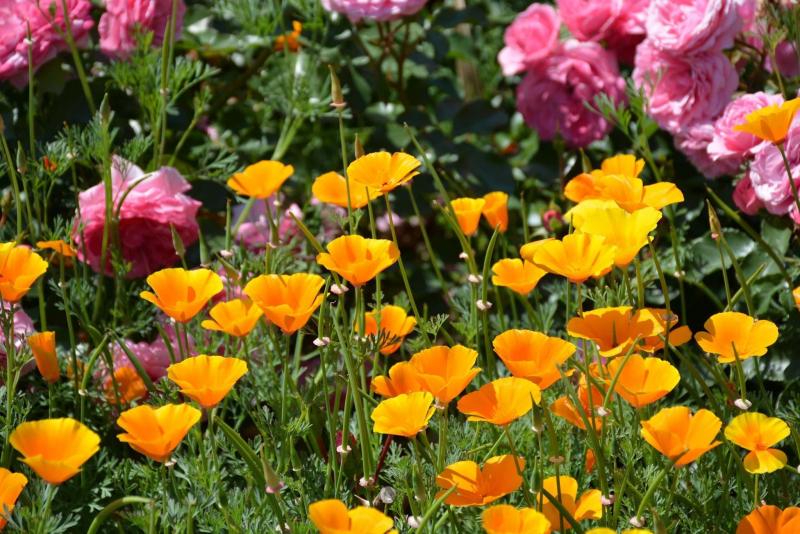
Reclaimed roadside finds were used to create this adorable backyard greenhouse.
Melissa J. Will / Empress of Dirt

Grow your garden and save money by taking cuttings.
Melissa J. Will / Empress of Dirt

Melissa J. Will aka Empress of Dirt developed her pretty backyard garden on a shoestring budget.
Melissa J. Will / Empress of Dirt
When Melissa J. Will bought her house just outside of London, Ont., she dreamt of making a garden. Lacking a surplus of cash, she began with a shoestring budget of $100. Today, gardening frugally and creatively has become a way of life for Will, who grows a range of plants from trees and shrubs to flowering perennials, veggies and herbs.
Will, who writes a blog about her adventures at empressofdirt.net, says that gardening frugally is not only good for your pocketbook, it’s also less wasteful, more creative and better for the environment. Will says the experience has given her profound happiness over the past 25 years.
Initially, she was enamoured with the idea of buying plants but disappointed when they failed to thrive. "My first lesson was to invest in improving my soil," Will says. "Soil is everything, in agriculture, nature and gardening. The top six inches of your soil will determine the fate of your garden."
Will maintains a compost pile and adds every natural resource she has that contains carbon or nitrogen. Once the materials decompose, the compost goes into her garden. Plants take up nutrients, some more quickly than others, she says, and so it is important to make plant nutrition readily available. Will does not subscribe to soil amendments that are not grounded in good science.
"The claim that Epsom salts, also known as magnesium sulfate, is a beneficial nutrient for plants," Will says, "is a popular but erroneous piece of gardening advice." In addition to being a waste of money, Epsom salts leach into our waterways, disrupting the natural balance. Will maintains that the only way to know if your garden soil is deficient in specific micronutrients and macronutrients is to have a soil test.
"Understanding the true temperament of your soil will save you money in the long term," she says, "on purchases of both fertilizer and replacement plants."
Locally, homeowners can have their soil tested by J&D Environmental, 862 Dufferin Ave. Owner Danial Kolba collects the soil and provides analysis. Rural gardeners can contact their local MAFRD GO representative.
In addition to amending her soil with compost, Will routinely collects leaves in fall. To promote decomposition, she first shreds the leaves and stores them in open mesh bins. She uses the leaves as a winter mulch to help prevent damage caused by extreme temperatures or the freeze-thaw cycle during the winter months.
It can cost a fortune when a large volume of plants need to be replaced. Will says that during the winter of 2017-18, she lost close to 50 per cent of her mature perennials because of abnormal snowfall. The insulating factor of snow cover is crucial to protecting our gardens in winter.
At a time when gardeners are seeing warmer winters and hotter, dryer summers, Will relies on cost-saving techniques such as propagating plants from seed, cuttings, division and layering. She is ordering Red Veined Sorrel from T&T Seeds, as well as Single Orange calendula and California Orange California poppy from West Coast Seeds.
Will grows a number of self-seeding plants. One of her favourites is delphinium, which typically is a short-lived plant. In addition, delphinium resents being disturbed and moved to another location. It can be difficult to start delphinium from seed — the seeds need to be cold stratified for at least two weeks and must be fully covered for germination. Will allows her delphinium to set seed in the garden and self-sow.
Will propagates many plants such as clematis by taking cuttings. In late spring or early summer, she takes three long cuttings without buds from an established vine. Using a sharp, clean knife, she trims the length of stem below a leaf node (a swelling along the stem, usually marked by the presence of leaves) and pinches off the lower leaves.
She dips the cuttings in a small amount of rooting hormone and plants them in pots with a moist soilless medium. To promote a humid environment, Will loosely places a large plastic bag over the new seedlings. After about three weeks, she gently tugs on the stems to gauge their resistance. Once the plants are rooted, they go into the garden. This method generally results in three to six new clematis plants for her garden.
Will also propagates shrubs such as weigela, dogwood, lilac, mock orange, viburnum and hydrangea from softwood cuttings. "It is so simple," she says. "You will never want to pay for a shrub again."
Stem cuttings can be taken at any time of the year; however, spring allows more time for cuttings to root. Will strips off the lower leaves and pinches out any growth between the top two leaves where a flower bud might form. On large-leaved plants, part of the remaining leaves can be cut in half to decrease the leaf surface area, which helps to reduce the need for moisture.
More than one cutting can be planted into a 10-centimetre pot. To start the plants, Will first stores them in her small lean-to greenhouse and then moves the pots to a shaded area of the garden where she maintains even moisture. In winter, she mulches the pots with a layer of leaves. Within a year, the plants have established roots and are ready to be planted in the garden.
Will also takes advantage of classified ads that offer free or inexpensive items such as plants, rocks, planters, pond equipment and so forth. Often, homeowners want to declutter and are happy to give away perfectly useful items, Will says.
Repurposing inspires Will’s creativity and results in significant savings. Will has few qualms about reclaiming roadside items. "It’s a shame when something that can be reused or repurposed ends up in a landfill," she says. When one neighbour discarded a metal colander and another threw out a floor lamp with hanging crystals, Will scooped up both and fashioned a chandelier for her garden.
In one corner of her yard sits a small greenhouse built from reclaimed wood and old windows that she found at the side of a road. Windows make up the sloped roof of the greenhouse, which she covered with corrugated plastic sheets when she decided to create a green roof.
Will ingeniously potted up the individual pouches on sturdy over-door shoe bags (the type you hang on a closet door) and secured the bags across the length of the sloped roof. "The shoe bags worked beautifully and can be reused year after year," Will says. This year, she plans to cover the greenhouse roof in potato vine and trailing petunias.
It’s best to accept that nature gets to have its way, Will says. "As gardeners, we are always compromising. Few things we put into our gardens are going to last forever and most will change over time. That’s the beauty of gardening."
Will would like to see more tool-sharing opportunities made available for gardeners. This would be especially useful for accessing tools that are seldom needed, she says. Looking for ideas on how to design your landscape? "Go on a garden tour and see what others have created," Will says. Ideas are free.
colleenizacharias@gmail.com




